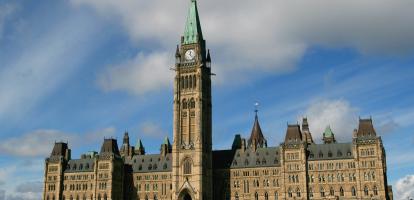For the first time in years, the Bank of Canada is under attack.
Before the COVID-19 pandemic, the bank kept inflation well under control – remarkably close to its 2-per-cent target – for more than 25 years. Since early 2020, however, inflation has surged. Consumer prices are up almost 7 per cent year-over-year. People are angry, and politics reflects their anger. The answer is simple: The bank must get inflation back down.
Some of the attacks are personal; promises to fire Governor Tiff Macklem have made recent headlines. That does not help. Partly because it tempts the bank’s defenders to respond in kind – to denigrate the attackers or dismiss people’s anger about inflation. Those responses would make a bad situation worse.
People hate inflation for good reasons. They get monthly, even daily, reminders that prices of food, energy, housing – the necessities of life – are rising faster than their paycheques are. Debasement of the currency is not something they can control. It is unsettling – even frightening – when the stability in money’s value that lets people budget, bargain and plan for retirement disappears.
And inflation is divisive: While a minority of Canadians, such as federal government employees with indexed pensions, can get protection from it, most people cannot. They feel their lack of protection, and they understandably resent it.
That is why, after the high-inflation 1970s and 1980s, the Bank of Canada brought the high inflation down, and the elected federal government of the day agreed on inflation targets to keep it down. Until recently, we did not have this problem, and we forgot how corrosive – and politically explosive – inflation can be.
So the Bank of Canada must lower it. To do that, the bank needs to raise short-term interest rates and shrink its balance sheet.
The interest-rate task is a familiar one. When the Bank of Canada floods the financial system with cash, as it did at the start of the COVID-19 pandemic, the cost of funds to banks and their customers falls. That stimulates growth of credit and money, which in turn stimulates spending. On interest rates, the bank has started pulling back; its target for the overnight rate, which was 0.25 per cent for almost two years, now stands at 1.00 per cent.
The balance-sheet task is less familiar. When the pandemic started, the bank decided its normal operations aimed at very short-term interest rates would not be enough. So it turned to quantitative easing – that is, buying bonds. Quantitative easing reduced worries that COVID-19 would trigger a financial crisis, and pushed more cash into the financial system, further stimulating growth of credit, money and spending. There, too, the bank is pulling back. It has announced that its holdings of bonds will decline as the bonds mature.
With inflation running at 6.8 per cent in April, however, the bank needs to do more. Shrinking its balance sheet passively, as the bonds mature, shows little urgency. The bank’s own analysis suggests that its buying did not affect the bond market much, and if that is true, the market should be able to take selling in stride. Moreover, selling the bonds would address head-on one especially damaging line of criticism – that the bank’s bond purchases financed the federal deficit, making it an ATM for the government – and make explicit to Canadians that inflation control comes first.
The bank also needs to raise its target for the overnight rate, and probably further than it has signalled so far. That will get controversial in time; people dislike inflation, but they also dislike rising interest rates on mortgages and loans. At the moment, however, an overnight rate around 1 per cent and an inflation rate that’s close to 7 per cent makes interest rates way negative in real terms. That prefigures faster growth of credit, money and spending, and higher inflation.
The stakes are rising. As long as inflation stays high, people will be angry, and political attacks on the bank of Canada will continue. An especially bleak but realistic scenario is that attacks on the bank’s integrity and independence mount even as tighter monetary policy starts to pinch, provoking fears that political interference will undermine inflation targeting altogether – with the perverse result that inflation stays higher for longer.
The Bank of Canada itself can do much to prevent that outcome. The best way to address the anger and the attacks is to get inflation down.
William Robson is the CEO of the C.D. Howe Institute.





